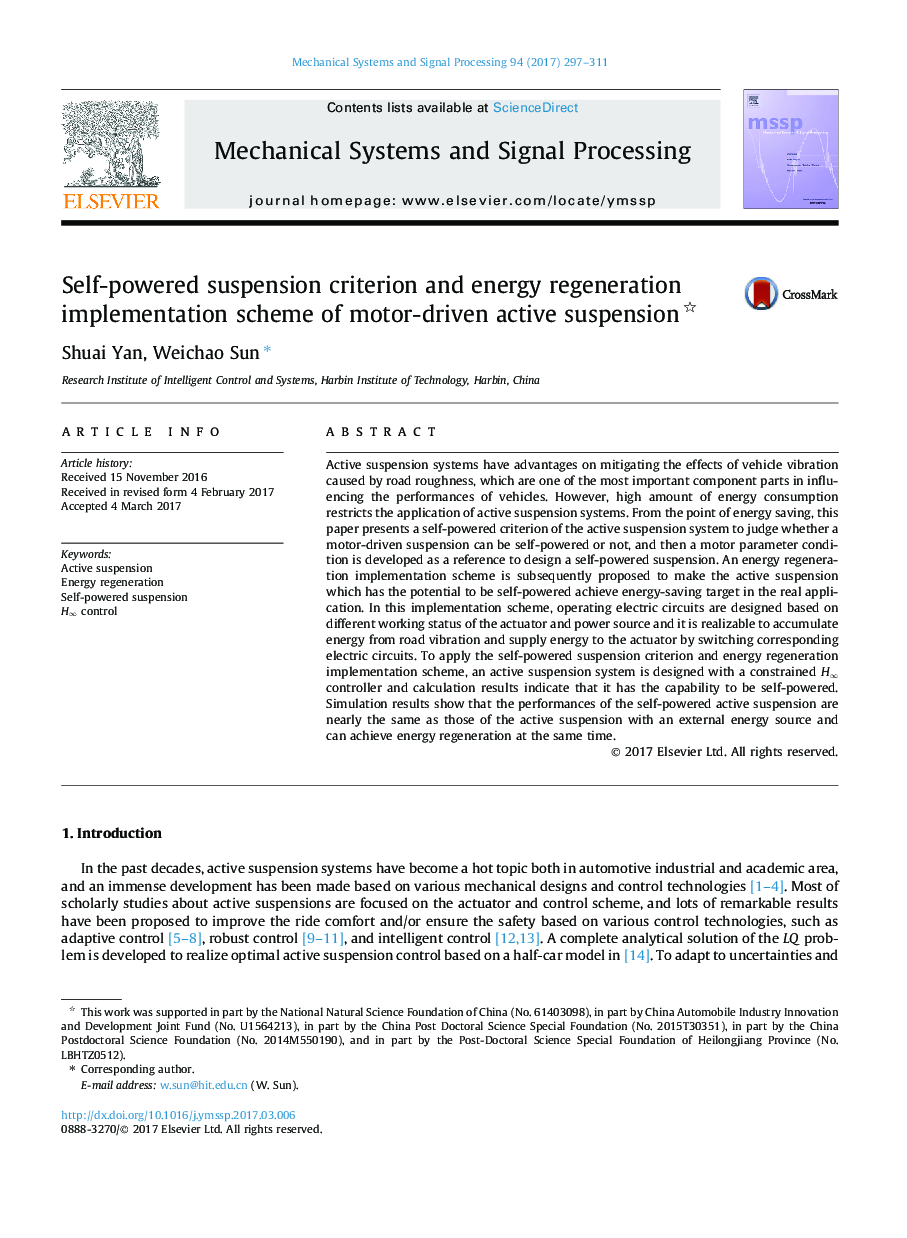| Article ID | Journal | Published Year | Pages | File Type |
|---|---|---|---|---|
| 4976941 | Mechanical Systems and Signal Processing | 2017 | 15 Pages |
Abstract
Active suspension systems have advantages on mitigating the effects of vehicle vibration caused by road roughness, which are one of the most important component parts in influencing the performances of vehicles. However, high amount of energy consumption restricts the application of active suspension systems. From the point of energy saving, this paper presents a self-powered criterion of the active suspension system to judge whether a motor-driven suspension can be self-powered or not, and then a motor parameter condition is developed as a reference to design a self-powered suspension. An energy regeneration implementation scheme is subsequently proposed to make the active suspension which has the potential to be self-powered achieve energy-saving target in the real application. In this implementation scheme, operating electric circuits are designed based on different working status of the actuator and power source and it is realizable to accumulate energy from road vibration and supply energy to the actuator by switching corresponding electric circuits. To apply the self-powered suspension criterion and energy regeneration implementation scheme, an active suspension system is designed with a constrained Hâ controller and calculation results indicate that it has the capability to be self-powered. Simulation results show that the performances of the self-powered active suspension are nearly the same as those of the active suspension with an external energy source and can achieve energy regeneration at the same time.
Related Topics
Physical Sciences and Engineering
Computer Science
Signal Processing
Authors
Shuai Yan, Weichao Sun,
